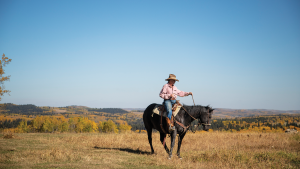It may sound like something ripped from the script of a particularly bad B movie, but giant goldfish — some the size of dinner plates — have authorities in Alberta worried about the invasive species’ impact on native aquatic environments.
Kate Wilson, an aquatic invasive species specialist with Alberta Environment and Parks, told the CBC that in one case in the municipality of Wood Buffalo, located in the province’s northeast, 40 goldfish were pulled from a stormwater pond. “That’s really scary because it means they’re reproducing in the wild, they are getting quite large and they are surviving the winters that far north,” said Wilson.
The number of goldfish turning up in the province in 2015 prompted it to launch the Don’t Let It Loose campaign. The CBC reported that Wilson said the campaign is designed to raise public awareness about the dangers of releasing domestic fish into nature. “Approximately a third of invasive species out there that threaten native aquatic environments are from aquariums and the ornamental trade,” Wilson told the CBC.
Alberta is also dealing with the Prussian carp, a type of wild goldfish that it says has been illegally released into various bodies of water in the province, which is so far the only jurisdiction in North America known to have the invasive species.
Large goldfish have also been found in Toronto. “They show up in the regular batches of fish, and every once in a while you get these big fat ones that look like pumpkins they’re so big and orange,” Rick Portiss, a fish expert with the Toronto and Region Conservation Authority, told the Toronto Star.
Aquarium releases and water garden escapes are the main reasons for the spread of goldfish and koi (larger species of carp), according to Fishes of Toronto, a guide published by the city. Once “released into lakes and stream in Ontario they can establish reproducing populations, which can cause considerable ecological harm,” says the guide, noting that both species “uproot and feed on aquatic plants, degrading fish and other wildlife habitats in wetlands and nearshore areas.”






